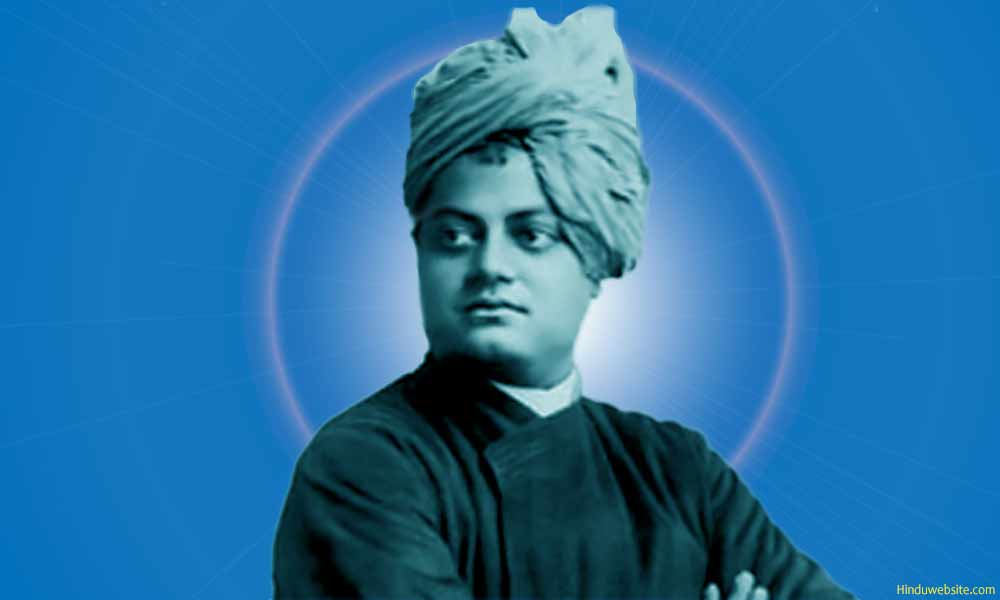
Why Did Swami Vivekananda Die?

Swami Vivekananda died on July 4, 1902, at the age of 39 years, five months and 24 days. Except for a few biographical accounts of his close followers, we do not know much about the last days of his life, or why he died at an early age. We know that in the last few weeks preceding his death he encouraged his followers and members of the math to practice meditation and lead a disciplined life. He also participated in meetings and discussions. From the available accounts, the following points emerge.
He was leading an active life as the head of the Ramakrishna Matth until his last days. It is said that on the day of his death he taught yoga and other subjects to pupils. Later he held a meeting with his colleagues about a planned Vedic college in the Matth. Then, he went to his room to do meditation, asking others not to disturb him, and a few hours later passed into the higher realm (mahasamadhi).
His close associates claimed that he had a premonition about his impending death. According to one account, he said to have commented that he would not be alive to see his 40th birthday. Another account suggests that a few days before his death he studied the almanac (panchang) to determine the time and date for his death. It is also said three days before his death he showed to an associate, Swami Premananda, a spot on the monastery grounds where he wished his body should be cremated.
He died due to several health problems. It is common knowledge that from an early age Swami Vivekananda suffered from many chronic ailments. The renowned Bengali writer Shankar, and author of The Monk as Man, placed the number at 31, which included insomnia, liver and kidney problems, malaria, migraine, diabetes and heart ailments. From his account, we also understand that before his death the Swami cut short his visit to Cairo, Egypt, due to health problems and returned to India where he wished to die.
He died peacefully while doing meditation. It is said that the Swami was intent upon doing meditation himself and urged everyone else at the monastery to practice it. He often reprimanded those who neglected to do it and asked them to forgo meals for a day as part of the self-discipline. On the day of his death, he performed meditation for three hours in the morning, and again for two hours in the evening during which he passed away. One version suggests that he died due to the rupture of a blood vessel in his brain, but according to another version like a liberated yogi he left the body through the mystic opening (Brahmarandhra) in the crown of his head by rupturing it.
is death was sudden. There was no indication of any suffering. None of his followers and associates at the Belur Math foresaw his death. To them it was a great shock. Upon knowing that he died many fell into inconsolable grief. For example, one associate narrated the following incident, which took place during the cremation of the Swami. “At this, Nivedita could no longer suppress her grief. She got up and began to circle the blazing funeral pyre. Seeing her close to the pyre, Swami Brahmananda was concerned that her skirt would catch fire. He conveyed this to Swami Nirbhayananda, who then took Nivedita’s hand and led her away from the pyre. He made her sit on the bank of the Ganges and tried to console her.”
The following points also emerge from the study of his life and works.
1. The Swami was very passionate about serving others and was frequently moved to tears by seeing the plight of the poor and downtrodden. He lived a hectic life in near poverty conditions as he visited several places within and outside India and accepted food and hospitality from diverse groups of people irrespective of their social or economic conditions. The life of austerity and difficult living conditions must have contributed to his several illnesses and early demise
2. As the head of the monastery, the Swami suffered from several financial difficulties. The poor living conditions and lack of proper medical facilities at the Math might have also contributed to the deterioration of his health.
Suggestions for Further Reading
- What is self?
- My Meeting With Ramana Maharshi
- Shun the company of the past
- No practice is needed
- All this is mind
- The Witness Self or the Observing Self
- The Zen Art of Seeing Things As They Are - A Story
- Who Am I?
- What is True Surrender
- Spirituality - The Power of True Surrender
- When Spiritual Practice May Not Work For You
- The Qualifications of a Teacher
- Biography of Jiddu Krishnamurthy
- The Qualifications of a Teacher- Love
- Thoughts and Aphorisms of Sri Aurobindo
- Sri Aurobindo on Astrology
- Man and Battle for Life From The Essays on the Bhagavdgita by Sri Aurobindo
- The Golden Verses of Pythagoras
- The Historical Christ, The Story of Jesus From Occult Sources
- Thought Forms By Dr.Annie Besant
- The Sevenfold Nature of Human Body
- The Symbols of Pythagoras
- Essays On Dharma
- Esoteric Mystic Hinduism
- Introduction to Hinduism
- Hindu Way of Life
- Essays On Karma
- Hindu Rites and Rituals
- The Origin of The Sanskrit Language
- Symbolism in Hinduism
- Essays on The Upanishads
- Concepts of Hinduism
- Essays on Atman
- Hindu Festivals
- Spiritual Practice
- Right Living
- Yoga of Sorrow
- Happiness
- Mental Health
- Concepts of Buddhism
- General Essays